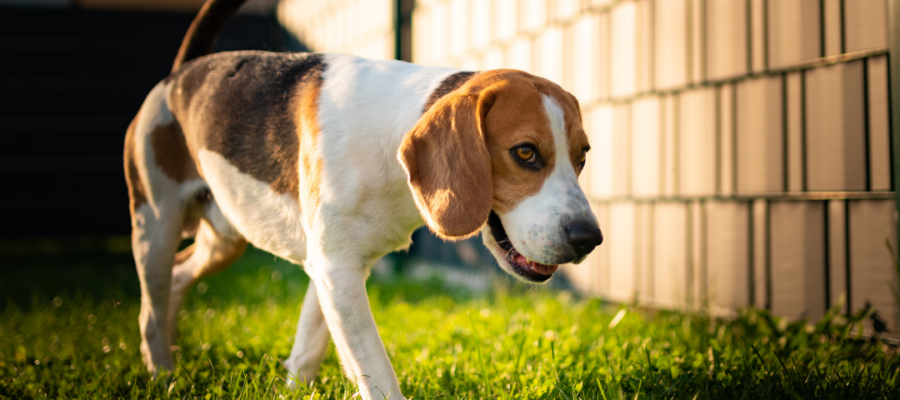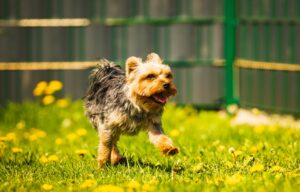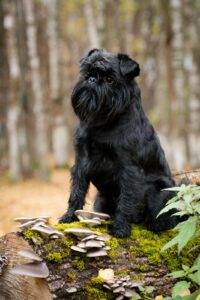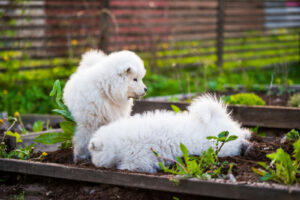Steer Clear of These Hidden Pet Toxins and Hazards in Backyards and Beyond

By Arden Moore – The Pet Health and Safety Coach™
I love having a spacious, fenced backyard for my dogs, Emma and Kona, to romp and play. On occasion, I place my indoor cats, Casey, Rusty and Mikey in a large, zippered popup enclosure and supervise as they get a safe opportunity to see, smell and hear nature. Looking around, the confines of the backyard can feel safe and inviting, but be aware that backyards can harbor unexpected health dangers to our pets.
Here’s an overview of some risks potentially hiding in your yard and what you need to know to keep your pets safe.
 LEPTOSPIROSIS LINGERING IN THE LAWN
LEPTOSPIROSIS LINGERING IN THE LAWN
All mammals can be at risk for a highly contagious bacterial disease called leptospirosis. Leptospirosis can be found in any urine left in your backyard by infected wildlife, including squirrels, raccoons, deer, and skunks. These spiral-shaped bacteria can survive in wet soil for weeks. A dog, for example, can become easily infected by licking its paws after walking in the backyard contaminated with this bacterium. Symptoms include vomiting, diarrhea, fever, shivering, and stiff walking.
What you can do: Be preventive and ensure your dog receives the leptospirosis vaccine yearly. While this vaccine is not a required vaccine, it is highly recommended.
UNSCOOPED DOG POOP
We love our dogs, but their stinky deposits can contain nasty things like parasites.
What you can do: For the health of everyone in the family, get in the habit of doing daily poop scoop patrol. I keep a poop container with a lid and shovel in the back corner of my yard. Another benefit of daily scooping means less chance of your sneaker landing on a gushy poop from your dog.
GIARDIA SWIMMING IN STANDING WATER AND PUDDLES
Giardia is a nasty organism that can make your dog sick if he laps up water from contaminated puddles, buckets, or containers in your yard. He can suffer chronic diarrhea and vomiting and experience loss of appetite and energy. The go-to treatment is an antibiotic called metronidazole and repeated rounds of treatment are often required to completely boot this parasite from your dog.
What you can do: Provide fresh drinking water outside in clean bowls. Having access to clean and fresh water could reduce the chance of your pet drinking water from sources you don’t want. Observe your yard and note any containers with water and empty.
FERTILIZERS AND MULCH
Sure, you want your lawn to sport a healthy green and your garden to bloom stellar flowers, herbs, and vegetables. But keep your pet’s safety in the forefront. There are risks associated with many commonly used fertilizers that can vomiting, breathing difficulties, gastrointestinal issues, and irritations to the paws and skin. Mulch can also carry a health risk. Avoid any products containing cocoa mulch, which is highly dangerous if ingested by your dog. It is also loaded with theobromine and caffeine and can cause a dog to suffer seizures, tremors, and a rising heart rate.
What you can do: Know your fertilizer and mulch. Always take the time to read the label and verify with a staffer in the gardening section at a retail location to make sure the products won’t harm your pet. With any fertilizer used, it’s recommended to wait up to 72 hours after application to allow your pet re-entry to the area. Washing the paws after being outside may also help to limit your dog from licking his paws and ingesting any fertilizer residue. Use a gentle cleanser, such as the ZYMOX® Enzymatic Shampoo can be used to remove environmental irritants.
RODENTICIDES
Dogs and cats can smell far better than we can, and their noses may lead them to rat or mouse bait you put out in hopes of getting rid of any roaming mice or rats. These baits do their job of killing these rodents, but they can also poison your pets and cause them to vomit, have trouble breathing, display blood in their urine, suffer from seizures, and more.
What you can do: Consider hiring a professional pest exterminating company that uses pet-safe methods. On leashed walks with your dog, steer him clear of any opportunities to sniff and scarf up any trash. Before booking a doggy vacay, find out if the hotel or Airbnb uses any rodenticides.
MUSHROO MS
MS
Beware of toxic mushrooms popping up through the grass blades. Edible mushrooms, such as portabella, shiitake, and cremini, are safe. But some wild varieties of this fungi can be extremely toxic if sniffed out and eaten by your dog. The Amanita mushrooms, nicknamed the “death cap” mushrooms, for example, give off a fishy odor and taste that can be hard to resist by dogs. Symptoms can range from muscle weakness and drooling to more serious ones, such as seizures, severe abdominal pain, liver failure, and death.
What you can do: Regularly patrol your yard to rid of any mushrooms popping up. Avoid overwatering your lawn because mushrooms grow quickly in damp conditions.
FLEAS AND TICKS
Dogs who do not receive flea and tick preventives year-round are at risk of suffering itchy or red skin, infections, weakened immune systems, and diseases carried by the parasites. A red rash, for example, is often an allergic reaction to an insect bite.
What you can do: Provide year-round protection with veterinarian-recommended products. Help your dog keep his coat healthy by bathing him in veterinarian-approved shampoos, such as ZYMOX as it controls microbial growth, is pH-balanced, and is free of any harsh detergents or parabens.
 GARDEN VEGETABLES
GARDEN VEGETABLES
Some of the many vegetables we love to consume are not recommended for dogs such as onions, chives, and garlic.
What you can do: Consider elevating garden beds. I grow a variety of herbs and vegetables inside large, metal garden containers that are propped up on sturdy legs about 4 feet off the ground. I do this to keep Kona and Emma from accessing unsafe plants for pets.
TREE DROPPINGS
Some plants and trees can litter your yard with seeds, berries, and fruit stones. If ingested by your dog, they can cause choking, intestinal blockages, and poisoning.
What you can do: Check if your trees, shrubs, and plants are pet safe and get in the habit of regularly raking up the droppings before your dog can sniff them out. As much as I love sago palms, none will be planted on my property because the nutty seeds are highly toxic if eaten by dogs.
FINAL TIP
Reach out to your pet allies. Consult professional gardeners, arborists, pest control companies, and veterinarians before choosing plants, shrubs, trees to grow in your yard, and any rodenticides to use to take care of trespassing mice and rats. If staying at an Airbnb, be sure to ask questions before making a reservation.
If your pet displays any symptoms, immediately contact your veterinarian or the ASPCA Animal Poison Control for guidance at 888-426-4435.


